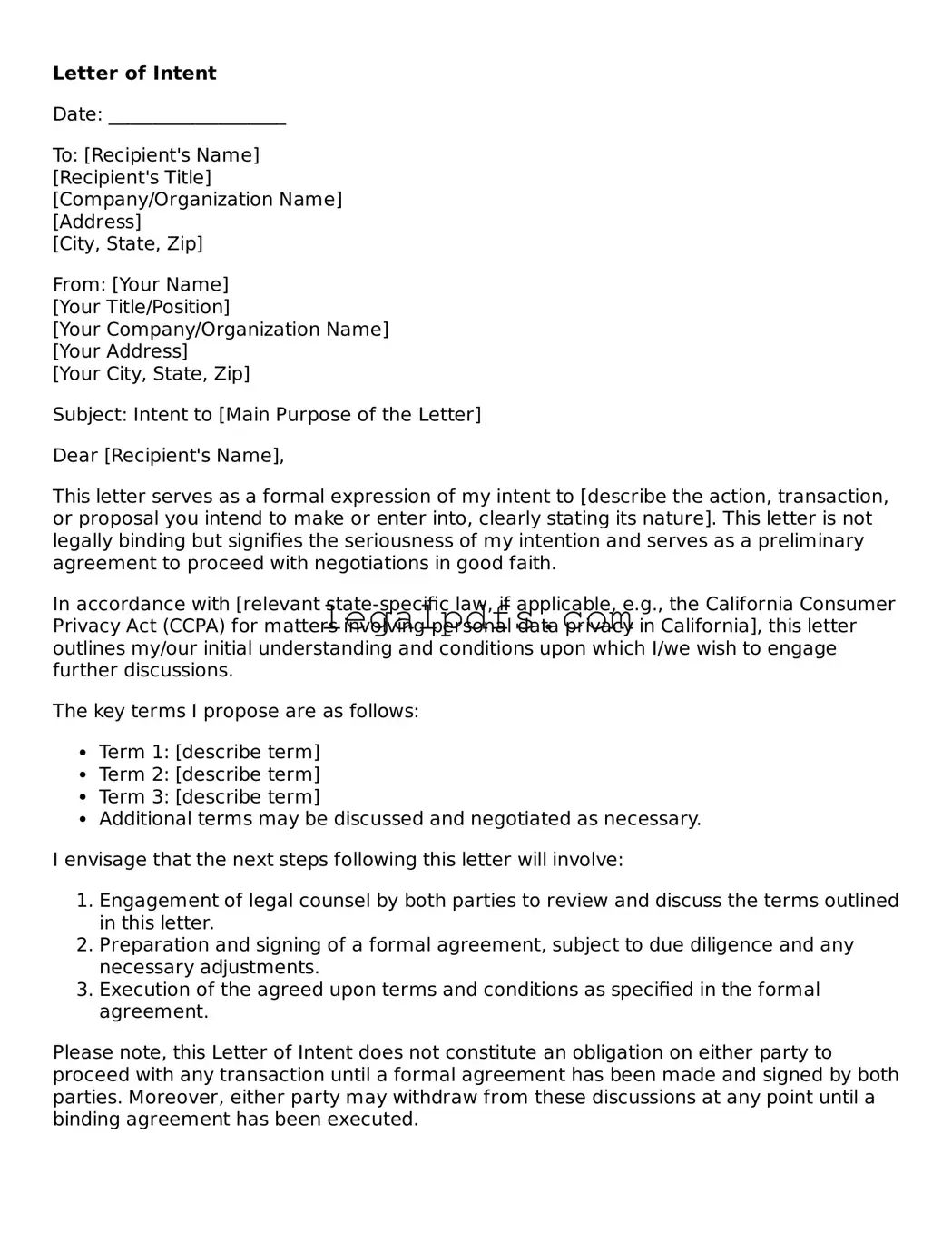Letter of Intent
Date: ___________________
To: [Recipient's Name]
[Recipient's Title]
[Company/Organization Name]
[Address]
[City, State, Zip]
From: [Your Name]
[Your Title/Position]
[Your Company/Organization Name]
[Your Address]
[Your City, State, Zip]
Subject: Intent to [Main Purpose of the Letter]
Dear [Recipient's Name],
This letter serves as a formal expression of my intent to [describe the action, transaction, or proposal you intend to make or enter into, clearly stating its nature]. This letter is not legally binding but signifies the seriousness of my intention and serves as a preliminary agreement to proceed with negotiations in good faith.
In accordance with [relevant state-specific law, if applicable, e.g., the California Consumer Privacy Act (CCPA) for matters involving personal data privacy in California], this letter outlines my/our initial understanding and conditions upon which I/we wish to engage further discussions.
The key terms I propose are as follows:
- Term 1: [describe term]
- Term 2: [describe term]
- Term 3: [describe term]
- Additional terms may be discussed and negotiated as necessary.
I envisage that the next steps following this letter will involve:
- Engagement of legal counsel by both parties to review and discuss the terms outlined in this letter.
- Preparation and signing of a formal agreement, subject to due diligence and any necessary adjustments.
- Execution of the agreed upon terms and conditions as specified in the formal agreement.
Please note, this Letter of Intent does not constitute an obligation on either party to proceed with any transaction until a formal agreement has been made and signed by both parties. Moreover, either party may withdraw from these discussions at any point until a binding agreement has been executed.
I appreciate your consideration of this proposal and look forward to your prompt response. Please feel free to contact me directly at [Your Phone Number] or via email at [Your Email Address] to discuss any aspects of this letter or to arrange a meeting for further detailed discussions.
Thank you for your time and consideration.
Sincerely,
[Your Name]
[Your Title/Position]
[Your Company/Organization Name]
